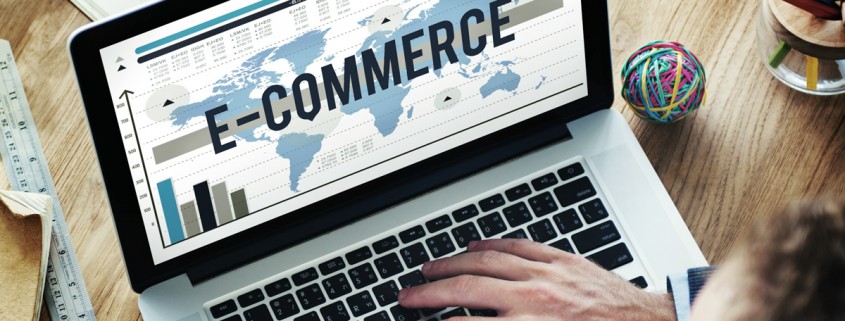The online shopping experience has never been better, thanks in large part to Amazon. The company’s unparalleled focus on delivering first-class customer experience has given consumers greater expectations in terms of service, delivery, choice and price transparency.
Amazon would not have been able to achieve such tremendous results without launching its online marketplace, providing increased product choice, competitive prices and superior customer experience, without the restraints of inventory and logistics.Today many other brick and mortar retailers have followed suit and launched their own online marketplaces in an effort to strengthen their position and reinforce their omnichannel offering.
As seen with the phenomenal success of Alibaba, this trend is also a major threat to B2B firms. Whether they be distributors or manufacturers of their own products, the rise of ecommerce and the service provided by many of the pure-players in the sector is having profound impact on their business. B2B buyers, procurement managers and indeed anyone responsible for purchasing equipment or services in businesses has had their expectations changed forever by B2C ecommerce. They now expect a more customised omnichannel purchasing experience with an equivalent level of choice, price transparency and service. Online marketplaces can definitely help address this.
This new model is now being adopted by many distributors keen to capture a share of the B2B market, which is estimated at over 780 billion dollars in the US alone[1]. Staples, one of the leading distributors of office supplies, has thus made its marketplace, launched in 2014, a key focus of its ecommerce strategy.
In addition to the generalists, we are witnessing specialised marketplaces that seek to position themselves as ‘one stop shops’ for clearly identified markets. Indeed, marketplaces are a particularly suitable sales model for niche or vertical business areas, insofar as they allow for extremely broad and deep ranges to be offered, as well as bring together significant communities of buyers and/or vendors. Compared to generalist marketplaces, vertical marketplaces offer a shopping experience that sticks to sector specific codes.
How can this new model work in a B2B setting? What are the main issues facing B2B companies to successfully embrace the marketplace revolution?
B2B ecommerce is adapting to new expectations
B2B buyers are changing the rules of the game by conducting their research and purchasing online. According to Forrester[2], B2B ecommerce is expected to exceed 1 trillion dollars by 2020 in the US alone. The agency’s forecasts for 2015 totalled $780 billion, more than double those of B2C ecommerce, which ‘only’ reached $305 billion[3].
In the Forrester report, all of the B2B distributors surveyed agreed that their main growth driver lay in online sales, and reported a 20% increase in their online turnover. Nearly 50% of companies with an Internet storefront estimated that more than half of their client portfolio would fully or partly migrate to the Web channel over the next three years[4]. This movement is expected to accelerate with the arrival of a new generation of procurement professionals already well versed in e-commerce.
Until recently, B2B companies would rely mainly on paper catalogues, a sales force on the ground and significant call centre resources to manage their sales and customer relationships. Now that a growing number of purchasers are searching and buying online (using both computers and mobile devices), these companies are forced to rethink their strategies for acquiring and engaging customers. The customer service provided by an individual has now been replaced by the relevance of algorithm results and search engine recommendations, as well as the exhaustive product sheet content.
Surveys of procurement professionals all confirm that B2B purchasing behaviour is changing to become more and more like that of B2C purchasing. 49% of major B2B buyers surveyed by Accenture[5] prefer to use B2C websites to make their purchases, and 52% plan to carry out more than half their purchases on ecommerce pure-player platforms in the next three years. Expectations concerning the smoothness and simplicity of purchasing processes are so high that 56% of buyers said they would pay up to 30% more to benefit from a better online experience.
When asked in the Accenture report what they deemed to be the 3 essential features when making a purchase online:
- 60% of the buyers focused on search and catalogue navigation functions
- 58% emphasised the importance of customer ratings for products and vendors
- 50% highlighted the importance of personalised recommendations.
Marketplace can help B2B distributors adapt to new requirements
Faced with these new requirements, distributors are investing heavily in maximising their online experience and aligning themselves with the best practices of B2C. Amazon has become the reference model for B2B players investing in the ecommerce channel, so much so that many of them aspire to recreate the ‘Amazon experience’ on their own websites. This is hardly surprising given how many of us use the site as consumers, but recreating this experience is as much a question of breadth of range as of ergonomics and service quality. Much of the challenge for candidates thus lies in how to cover the long tail in various categories.
For a distributor, the marketplace can also be a very good tool to strengthen cooperation with suppliers. Most B2B distributors do not source their suppliers’ entire catalogue, instead selecting part of it to include in their offering. When a distributor opens his marketplace, it can offer its suppliers an additional turnkey sales channel for all the products it does not buy from them. The integration of a partner can also go further than a simple catalogue import. If the supplier has a brand to promote, the distributor can propose a dedicated sales area on the marketplace, via a corner presenting its offering under its own brand.
The marketplace can also be an excellent lever to strengthen the integration of online and in-store offerings. We are witnessing the accelerated convergence of physical sales and online sales. Buyers now expect a unified offering from one sales channel to another. The contribution of mobile technology plays a key role here by increasingly blurring the line between offline and online.
It is very interesting to observe, in this context, a growing number of physical chains, like Staples in the US or Retif in France, that are opening marketplaces in addition to their ecommerce sites. This is often explained by the fact that, without the contribution of a marketplace, most of these players would be left to propose an online offering that would be less significant than that of their physical points of sale.
Conclusion
Make no mistake the traditional boundaries of B2B commerce are being completely remodelled, and marketplaces are the main driver of this transformation. Tomorrow’s leaders of B2B ecommerce will be those that manage to capitalise on this model to stand out from the crowd, by meeting the increasingly demanding requests of B2B buyers.
Footnotes:
[1] Portals to Business, Internet Retailer, 2015
[2] Digital is busy transforming B2B ecommerce, Forrester, 2015
[3] US Department of Commerce, 2015
[4] Digital is busy transforming B2B ecommerce, Forrester,2015
[5] Building The B2B Omni Channel Platform Of The Future, Accenture hybris, 2014 (https://www.accenture.com/us-en/_acnmedia/Accenture/Conversion-Assets/Do…)

Written by Barry Murphy
Barry Murphy is the Director of Content and Product Marketing at Mirakl. In this role, Barry leads the alignment of Mirakl's offerings to market needs for the next generation of online commerce. Barry previously ran product marketing organizations for X1 and Mimosa Systems (now part of HPE). Barry also had a highly successful stint as Principal Analyst at Forrester Research. Barry received a B.S. from the State University of New York at Binghamton and an M.B.A from the University of Notre Dame.


